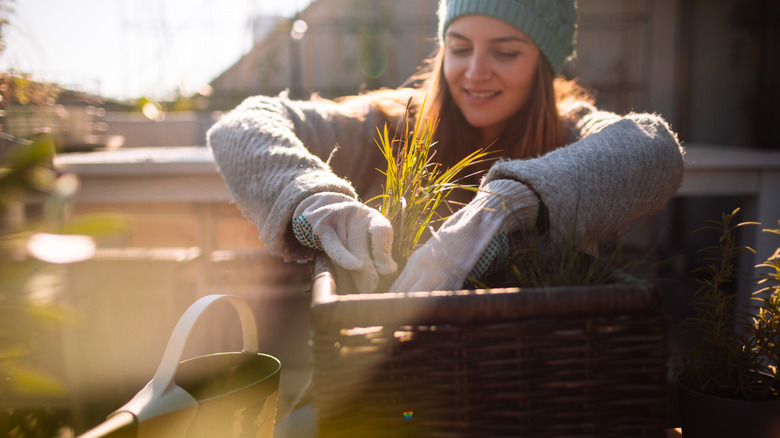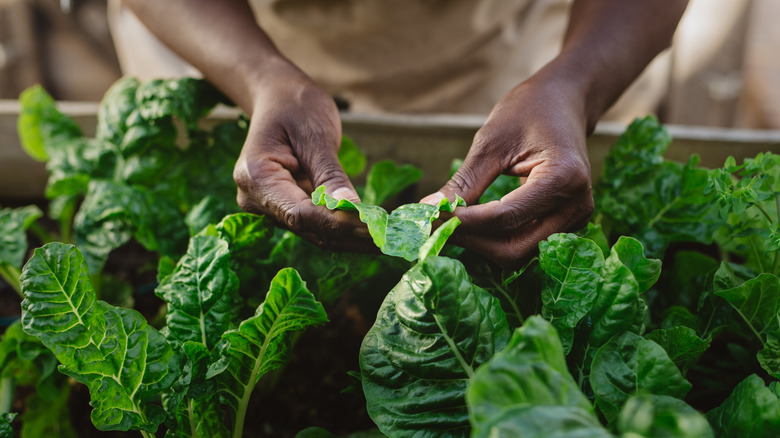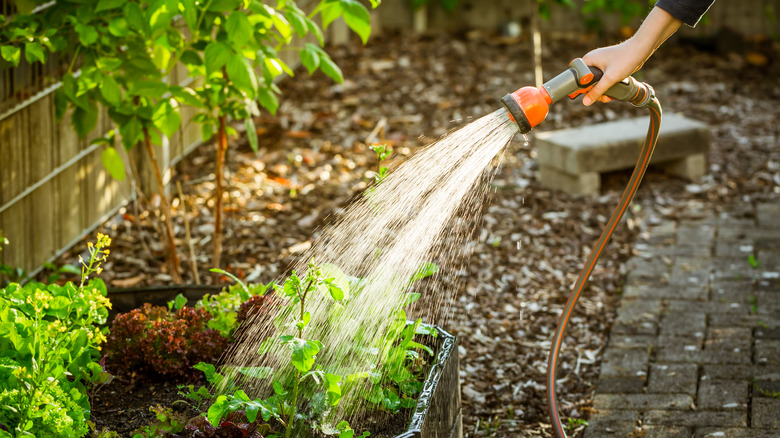Here's Why Fall Is A Great Time To Start Gardening
If the idea of fall gardening has crossed your mind, it's worth exploring further. While cool weather and less sunlight present their own set of obstacles to overcome, fall is not just an "end-of-season" moment for gardeners. It's a full-fledged growing season, albeit shorter than spring, but with quality advantages, especially for certain crops. Many plants genuinely thrive in the cooler temperatures of fall, and the environment offers more rain, reducing the time you need to spend with the garden hose. Think of it as nature giving you a helping hand, not to mention a break on your water bill.
Now, it's not all a bed of roses. Cold-weather gardening has its challenges, including slower plant growth, sporadic harvests, and the potential need to invest in extra gear like greenhouses or protective covers. There's also an increased risk of diseases like fungus due to the cool, damp conditions. However, when weighed against these challenges, the benefits of fall gardening hold their own. So, before you hang up your gardening gloves for the year, consider giving fall planting a shot. With all its inherent advantages, you might find it's the perfect season to cultivate your garden and gardening skills.
Crops that thrive in the coolness of fall
Plants such as arugula, spinach, kale, and Swiss chard not only survive but thrive during the fall and winter. Cooler temperatures make these greens taste even sweeter and reduce their chances of premature bolting or seeding – a win-win situation! But it's not just greens; carrots also thrive in cooler weather. These crunchy delights might be good year-round, but they excel in the mild temperatures of the fall. While they can be planted in the spring, hot summer weather can make them bitter. Mild temperatures in the fall make for sweet and tender carrots that practically beg to be pulled out of the ground and enjoyed.
Fall gardening goes beyond the usual suspects and gives you the chance to explore root vegetables such as turnips, which also appreciate milder temperatures. Turnips are nutritional powerhouses and great additions to your autumn table. When it comes to root vegetables, radishes are also worth mentioning. If you're new to gardening, you'll find them to be very low-maintenance and quick to grow – allowing you to hone your skills without committing to a longer-term, more complicated crop. You can even experiment with unique fall varieties like the Miyashige white fall daikon radish and the deep-till radish. Lastly, you can include some herb varieties like sage, thyme, and parsley, which flourish in cooler temperatures, making your meals a delight for the senses.
Water-saving and weed-reducing: other benefits of fall gardening
During the cooler months, the need for supplemental watering significantly decreases. This is due to more frequent rains and lower temperatures that reduce the rate of water evaporation from the soil. Not only does this save water, but it also saves you from the bigger utility bills that often come with gardening in hotter seasons. The soil itself is another reason to consider fall gardening. Cooler temperatures and increased moisture result in softer soil, making it easier to work with. Planting seeds or transplanting seedlings becomes much easier when the ground is more forgiving.
Let's not forget about weeds. The bane of every gardener's existence, weeds grow more profusely in abundant sunlight and warm temperatures. Those that grow more in hot weather are some of the hardest to control. However, in the fall, you'll notice that the cooler temperatures and reduced sunlight have a suppressing effect on weed growth. The fewer weeds you have to deal with, the less likely you'll need to resort to chemical weed killers. That's better for the soil, water supply, and your health. Furthermore, fewer weeds mean less time spent weeding, which is always a win in any gardener's book.


